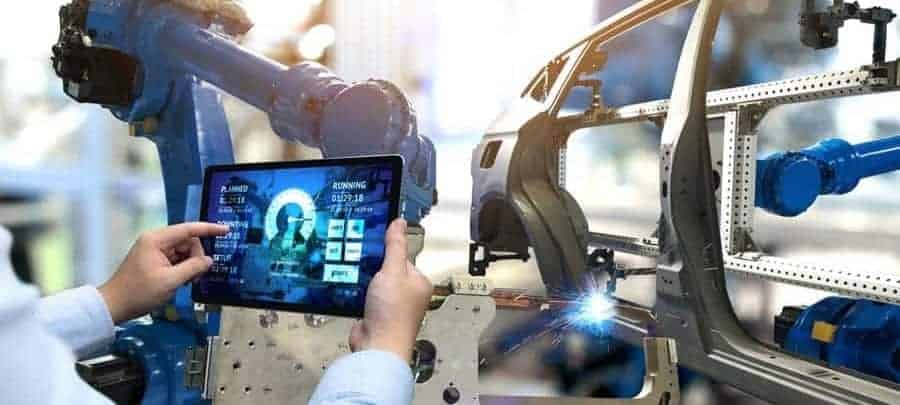The SFI software acts as a link between the world of sensors, controls, machines and the SAP system used in the company allowing data to be exchanged between these worlds.
The combination of real-time information from production with data from business logic enables the company to provide predictive plant maintenance tailored to requirements and, through increased transparency, ensures improved machine availability and more efficient plant maintenance management. GIB’s IoT application, SFI, is currently being tested in pilot projects.
Strategic realignment with the IoT goal
While digital technologies such as IoT, big data analytics, and cloud computing are highly relevant in many organizations, they are still poorly implemented. For example, although sensors are the primary source of information in factories, 95 percent of the data they generate is still unavailable to IT systems.
In order to establish the missing link between OT (production) and IT (ERP), GIB developed a smart software solution that closes this gap and links the hitherto separate information environments with the goal of connecting automation technology and SAP-controlled business processes with one another.
But what does this connection actually mean and what benefits can companies derive from it?
“Initially, we focused on the area of plant maintenance since the processes and systems established there have a high degree of connectivity to our SFI solution. The key question was as to how you can make existing plant maintenance processes even more efficient using sensor technologies” reports Tobias Schwartz, Product and IoT Manager at GIB.
Schwartz adds, “The initial idea was to expand the existing condition monitoring system and integrate it with the ERP system using GIB SFI. The filter systems were priority as the first application case, since they have to be replaced at short time intervals.”
Generally, filters are changed at regular intervals. However, this is often before they reach the end of their life cycle. In the worst case, the filters may be clogged completely before their planned replacement. This can have far-reaching effects on production and the working conditions of employees at the plant.
In the first case, the redundant maintenance results in increased costs. In the second case, avoidable risks arise, which can result in considerable costs due to unplanned production losses or worse.
Enabler of the smart factory
With the SFI software component as the link between the shop floor and the ERP level, monitoring of the filter systems can now be implemented in a time- and cost-optimized manner. The use of the sensors on the filters and appropriate software makes predictive plant maintenance possible.
“Here, a sensor system constantly monitors the filters and immediately registers when a specific filter is clogged. This allows plant maintenance technicians to react early, order a new filter as needed, and schedule a time slot for filter replacement,” explains Schwartz. “Maintenance workers no longer need to react on an ad-hoc basis when a sudden requirement arises. They can now be proactive and plan ahead. Plant maintenance tasks can be coordinated with the production managers at an early stage using this strategy. This helps avoid unplanned production downtime.”
However, in order to ensure that, it is necessary to have transparency with, for example, the SFI from GIB as the corresponding link.
Switching from time-based to condition-based plant maintenance results in cost savings on different levels: First and foremost in the plant maintenance process itself through increased predictability. Secondly, through the demand-oriented use of spare parts.
The combination of machine and sensor data with business processes thus opens up new ways of completely rethinking and optimizing business processes.






















Add Comment